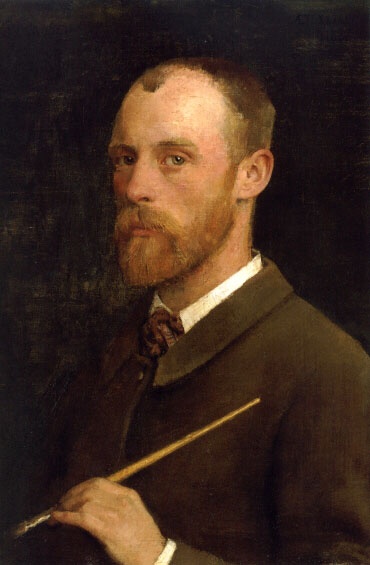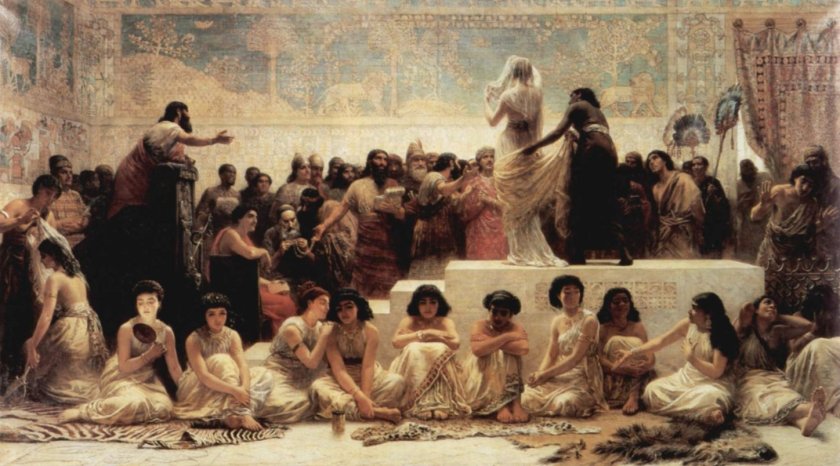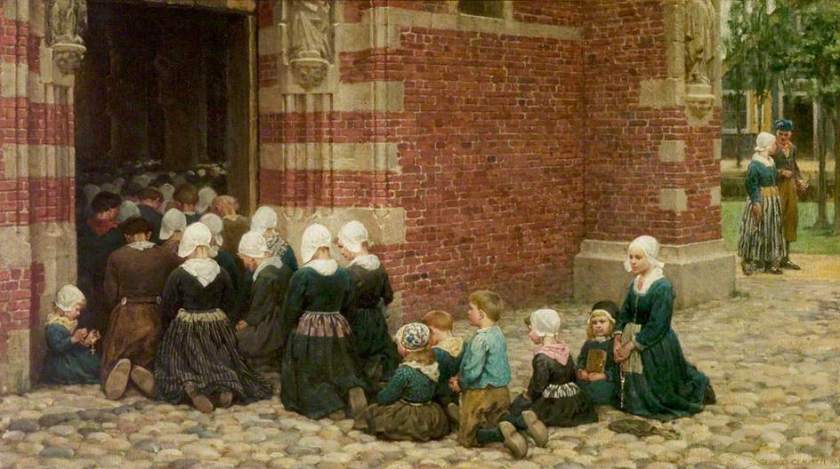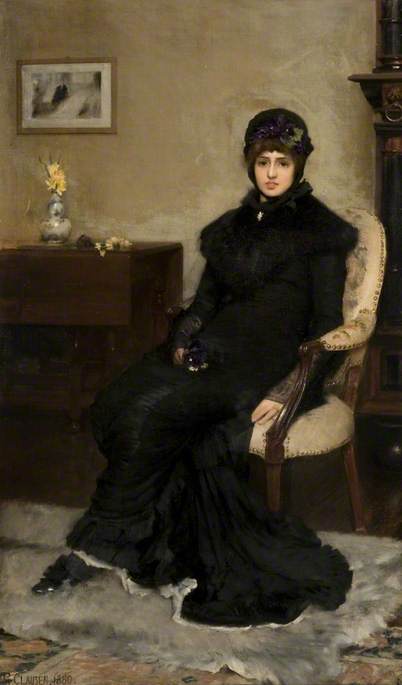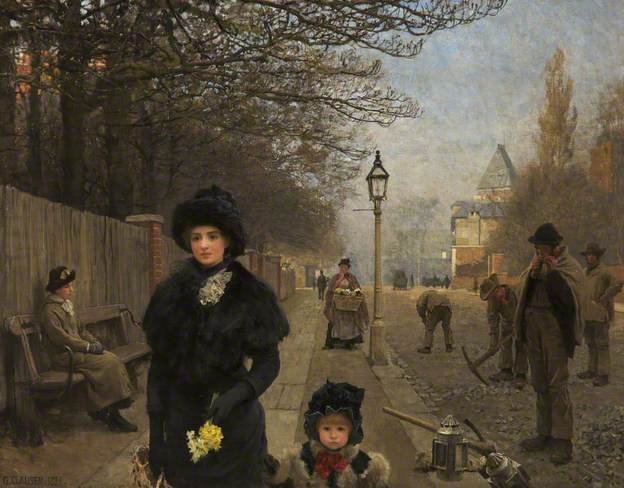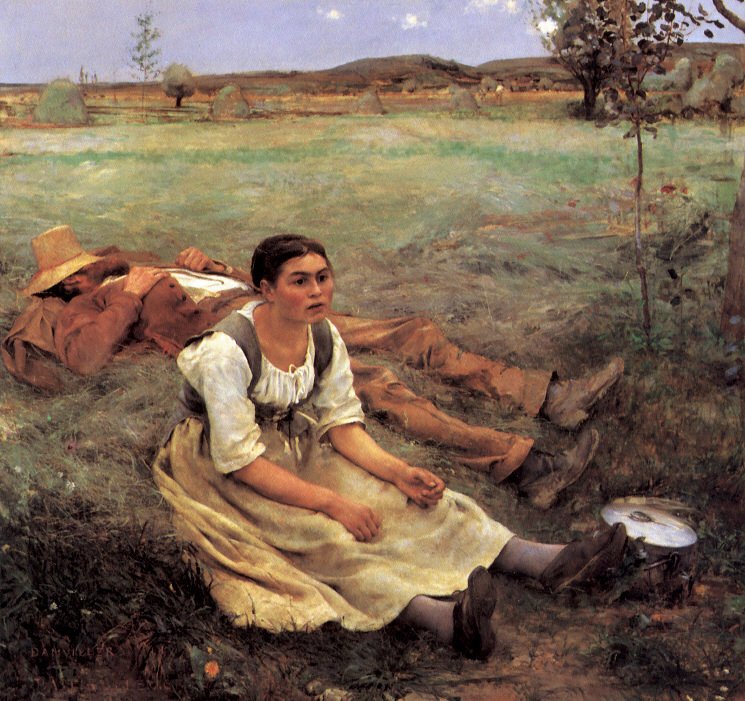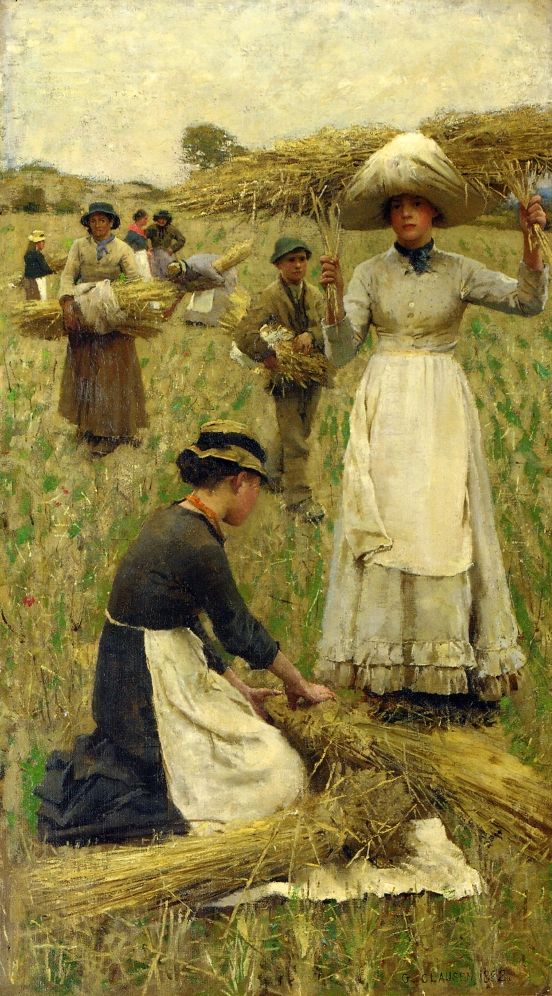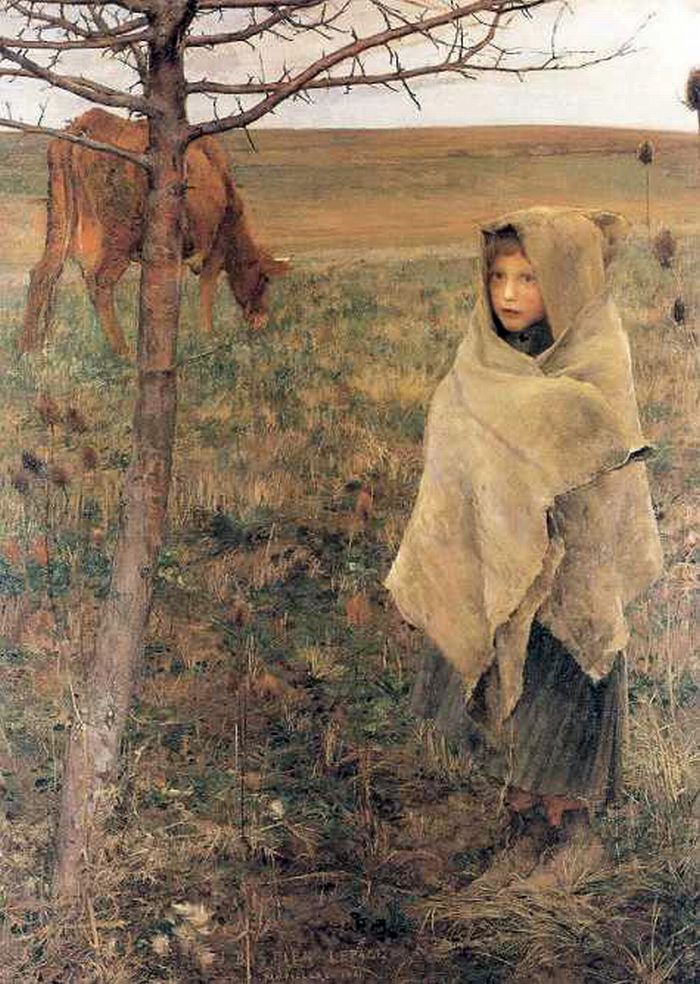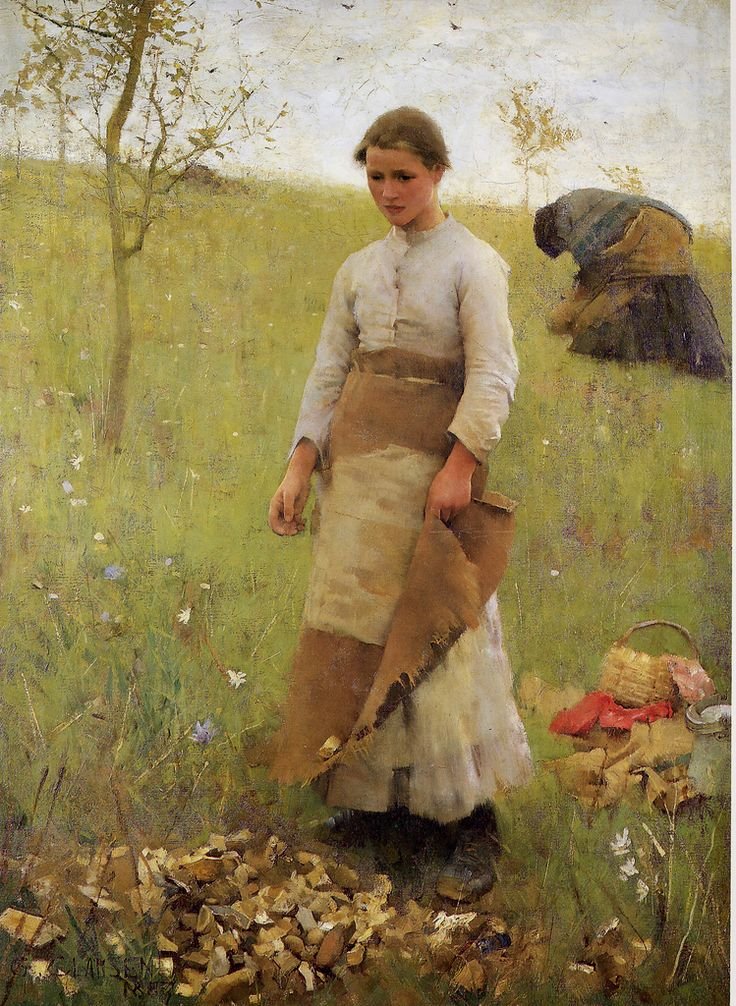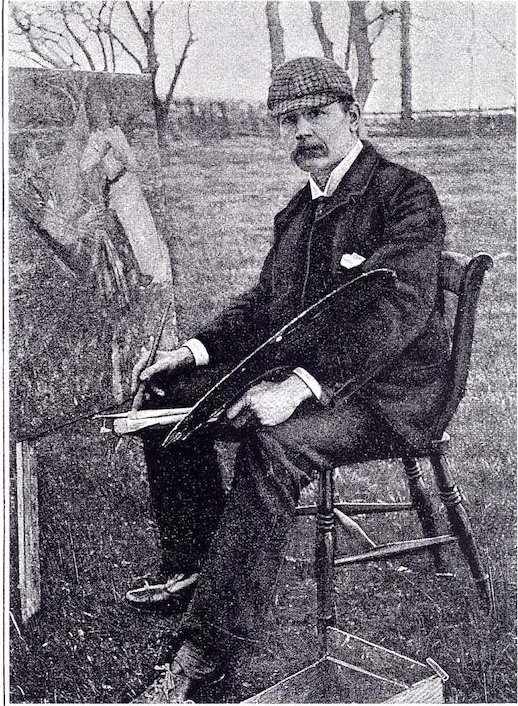
(photo c.1893)
A few blogs ago I looked at the life and works of George Clausen and termed his art as rustic realism and today I want to delve into the life and the art work of another such painter, the English realist rural landscape artist Henry Herbert La Thangue.
Henry Herbert La Thangue was born in Croydon, Surrey on January 19th 1859. He attended the renowned public school, Dulwich College, where two of his contemporary school friends were fellow aspiring artists Stanhope Forbes and Frederick Goodall. He enrolled briefly at the Lambeth School of Art in 1873 before enrolling on a five year course at the Royal Academy schools in 1874. The culmination of his studies at the Academy came in December 1879 when he won a gold medal for his work as well as a three year travelling scholarship to study in Paris at the studio of Jean-Léon Gérôme at the prestigious Ecole des Beaux-Arts. It was during this time, whilst staying in the French capital, that he became influenced by the works of Whistler and the many paintings he saw at the Salon by artists who favoured rustic naturalism. He was also influenced by the landscape works of the en plein air artists of the Barbizon school. So how did the Barbizon School come into being ?
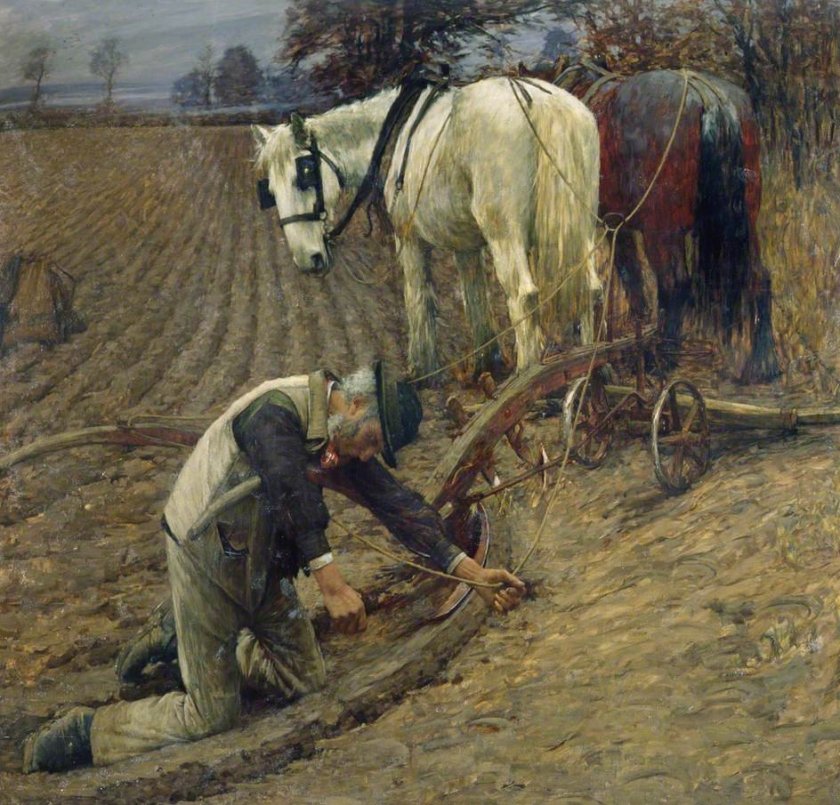
As far as the French Academy was concerned aspiring artists should be taught in the Neoclassical tradition and copy the style of the painters of the Renaissance and Classical era. Landscape art was not looked upon as an important genre unless the landscape , usually an idealized version, was combined with some historical connotation. In 1816 the Academy even encouraged this genre by introducing a Prix de Rome in paysage historique (landscapes with a historical nuance), the winner of which would travel to Rome to live and paint at the Villa Medici. By making this award the Academy had hoped to encourage artists to paint not just landscapes but by adding the historical aspect to the work it would ensure history painting would not die. It actually had the opposite effect as many artists turned to simple landscape work and this desire was further enhanced when in 1824 John Constable’s landscape works were exhibited at that year’s Salon.
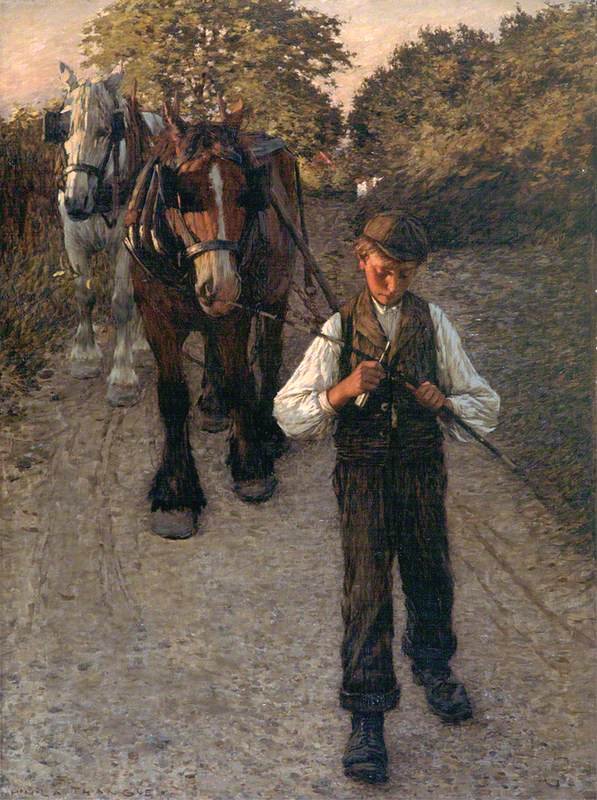
In the warm summer months artists would leave the French capital and move to the tranquillity of the Parisian countryside around the Forest of Fontainebleau with its dense forest and meadowlands. Small hamlets were situated around the periphery of the forest which made ideal stopping-off places for the artists and one such hamlet was Barbizon which proved to be the ideal temporary home for many landscape painters, such as Théodore Rousseau and Constant Troyon, who had rejected the Academic tradition of historical landscape painting and embraced a more realistic representation of the countryside and life in the country. Later in the 1840’s, artists such as Jean-François Millet and Charles-François Daubigny came to Barbizon.
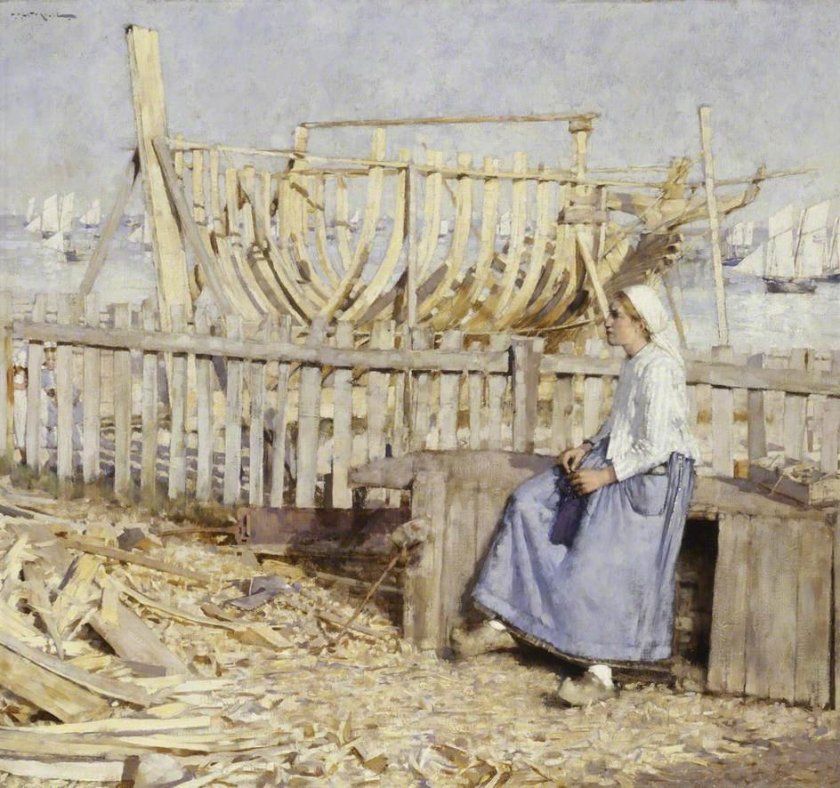
In 1881 after completing his studies at the Ecole des Beaux-Arts, La Thangue travelled to Brittany, another popular region with landscape painters, and worked alongside the English landscape painter, Stanhope Forbes. Whilst here, he met the renowned master of rustic realism, Jules Bastien-Lepage. That year, he visited the small coastal commune of Concale, east of St Malo and completed his painting entitled The Boat Builder’s Yard. He remained in Brittany until mid 1882 and the following year he travelled south to the Rhone Valley commune of Donzère with his friend, the sculptor James Havard Thomas.
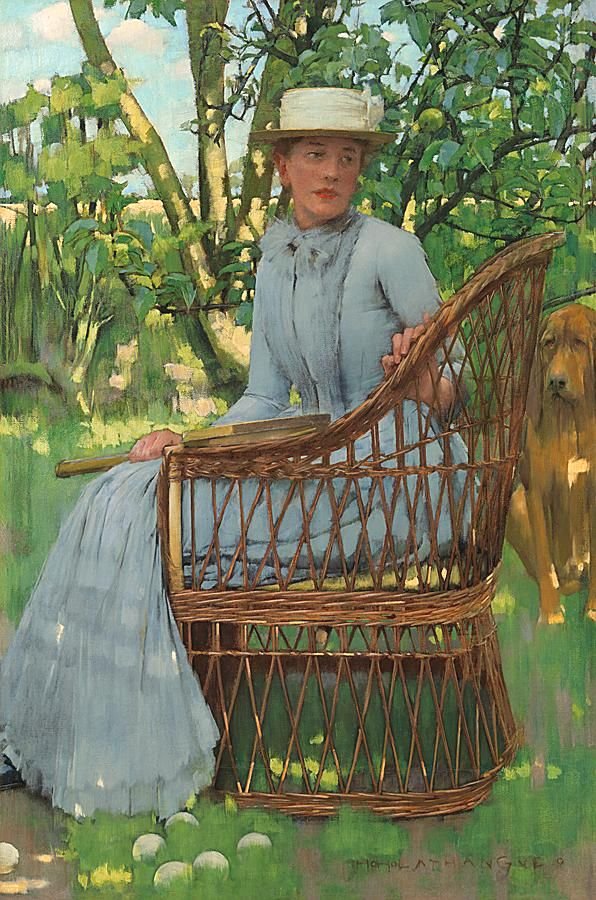
When he returned to England in 1884, La Thangue first lived at South Walsham on the edge of the Norfolk Broads before moving to Rye in East Sussex for a brief time in 1885. This was an eventful period in La Thangue’s life for in 1885 he married the actress, Kate Rietiker. It was also at this juncture in his life that he became interested in politics surrounding art and art establishments. La Thangue was a radical thinker and believed fervently that the Royal Academy had to change. La Thangue proposed that it should be a more democratic society open to all and based on the principles of ‘universal suffrage’ Much was written about his views in the press but ultimately nothing changed. La Thangue remained unhappy with the administration of the hallowed society and so he, along with a number of his like-minded contemporaries, having failed in their attempt to revolutionise the establishment, founded the New English Art Club in London in 1885 as an alternate venue to the Royal Academy
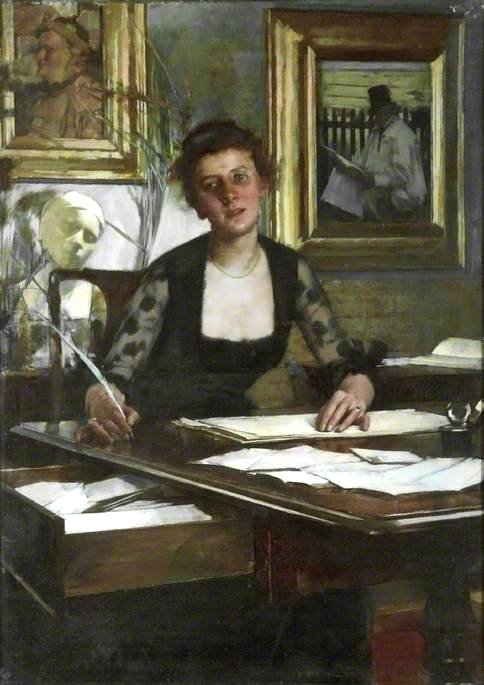
In 1886, despite his misgivings surrounding the Royal Academy, he continued to exhibit works at the art establishment. The Royal Academy was not the sole outlet for his works as the paintings were also exhibited Royal Society of British Artists and the Grosvenor Gallery, which had opened in 1877 by Sir Coutts Lindsay, and was a welcoming home for those painters, such as Edward Burne-Jones and Walter Crane, whose works the more conservative Royal Academy shunned. His paintings could also be seen at the New Gallery which was founded in Regent Street in 1888 by Comyns Carr and Charles Edward Hallé who had once been co-directors of the Grosvenor Gallery but because of all the Grovesnor Gallery problems, had resigned and set up this new gallery. The New Gallery was also a home for the works of the Pre-Raphaelite and Aesthetic movement artists and artists such as Lawrence Tadema-Alma, William Holman Hunt, Lord Leighton and George Frederic Watts exhibited works at this establishment. La Thangue also exhibited at the Royal Institute of Painters which he had joined in 1883.
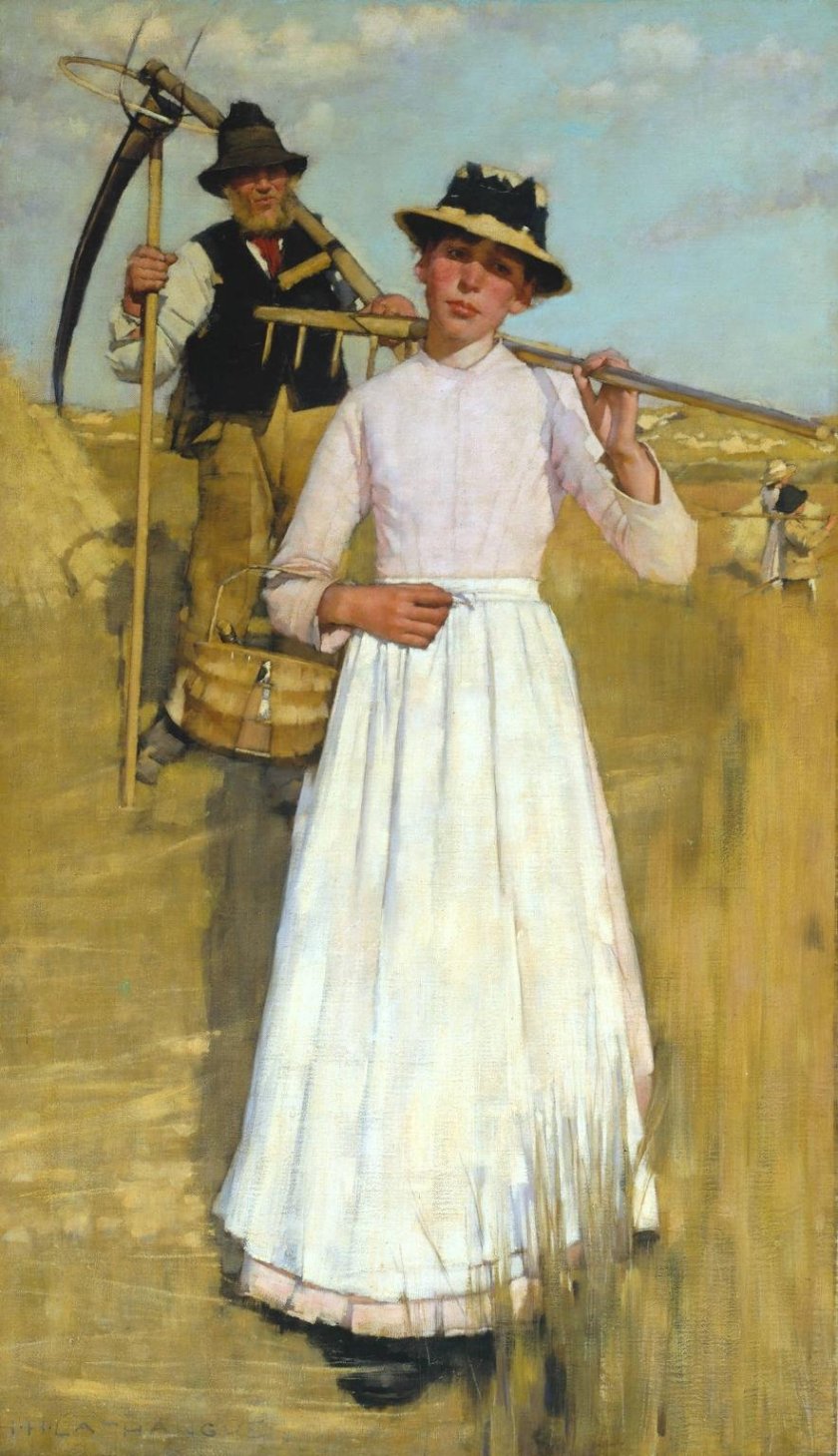
In the summer of 1886, La Thangue moved home to the Norfolk countryside and the small fenland village of South Walsham. During these years La Thangue produced head studies of farm hands and fisherfolk and it was whilst living here that he completed his landscape painting entitled Return of the Reapers. This was a typical example of La Thangue’s rustic realism style. La Thangue was probably influenced by the works of the French artists Jules Bastien-Lepage and Gustave Courbet and the en plein air works of the French Impressionists.
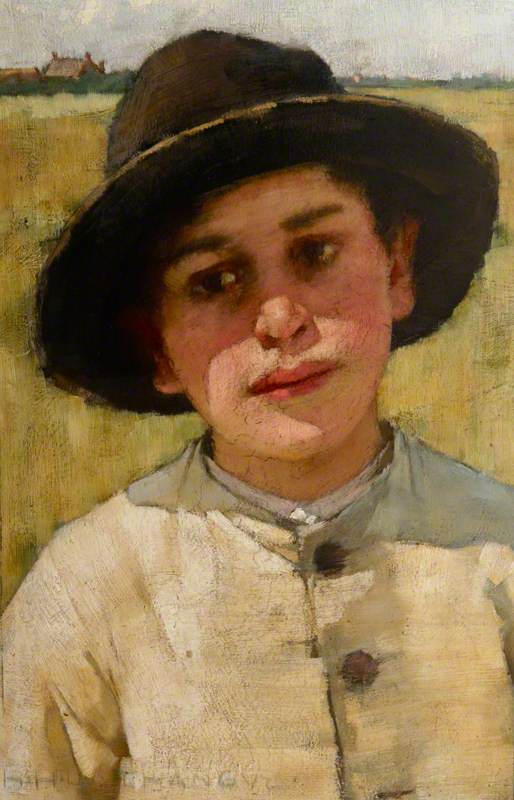
Five years later La Thangue left Norfolk and moved home south to the neighbouring county of Suffolk and the coastal village of Bosham just a few miles from the town of Chichester. He carried on painting rural scenes, often large-scale works, with their realism connotations.
I
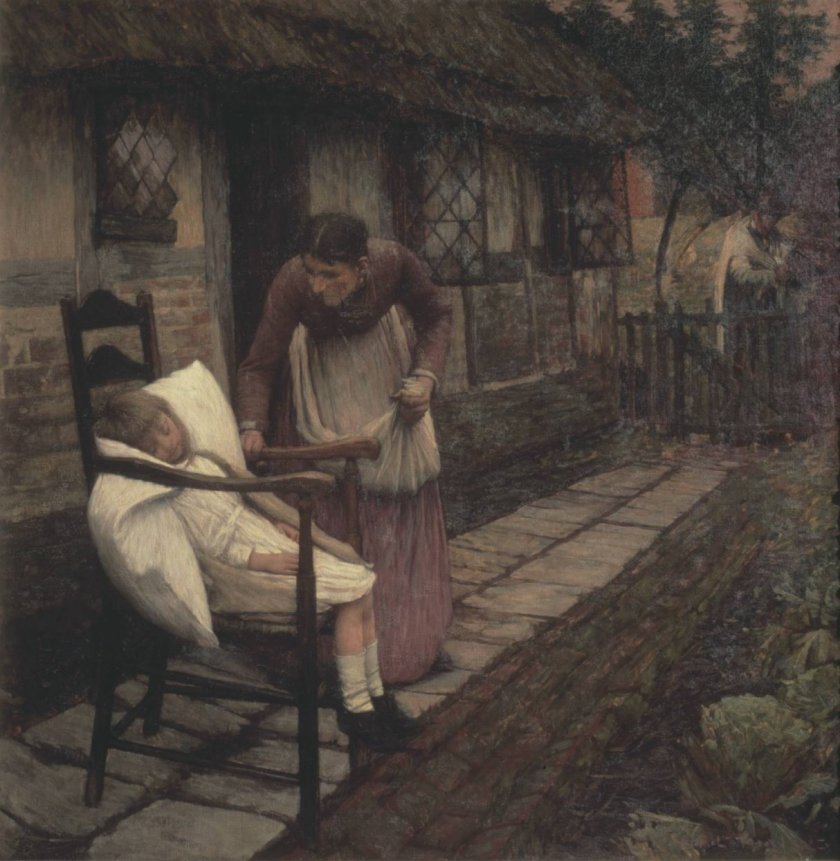
n 1896 he completed a work The Man with the Scythe, which is now housed in the Tate Britain gallery in London. This proved to be a controversial work. At first glance one ponders as to the reasoning behind the title. However, look closely and in the background you can make out a man carrying a scythe but this is not just a country scene with a man off to work in the fields whilst the mother tends her daughter. This is a more solemn and symbolic piece, as what we are witnessing is a mother horrified to discover that her young daughter has died,. At the very instant of her tragic discovery a man arrives at the gate carrying a scythe, which is one of the traditional symbols of death, often referred to as the ‘grim reaper’. This tragic and somewhat melodramatic depiction by La Thangue was a definite change in his subject matter and may have been influenced by the pair of paintings by Frank Holl in 1877 entitled Hush and Hushed (See My Daily Art Display Feb 9th 2012)
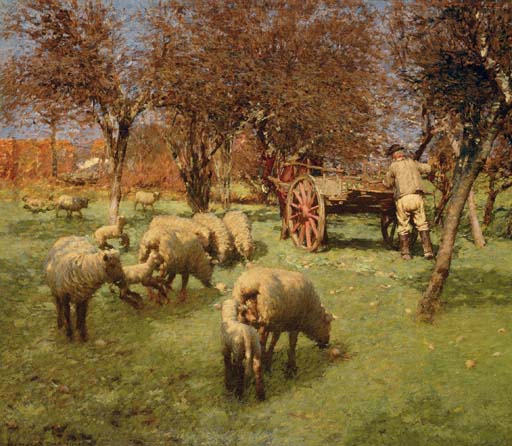
His English base from 1898 and into the early 1900’s was in the West Sussex village of Graffham. His painting motifs still concentrated on rural life. His works, depicting both arable and livestock farming, documented life in the fields from the harrow and the harvest, to animal husbandry and fruit growing. He was always searching for the perfect portrayal of the countryside and countryside practices during the different seasons. In his painting entitled The March, completed around 1900, he depicted the orchard near his house which was also used as nursery areas during lambing time. We see the farmer scattering turnips from his cart which would feed the sheep and fatten up the lambs. It could be that this depiction by La Thangue was influenced by the famous novelist and gentleman-farmer Rider Haggard, a contemporary of the artist, for in his 1899 book A Farmer’s Year he talked about fattening lambs:
“….’The flock is being penned at night on the three-acre [field] with a view to improving the bottom of his young pasture which has grown somewhat thin. In the daytime they run out to one or other of the meadows, where root is thrown to them, and every night they are shut in a new fold on the three-acre and receive a ration of corn, hay and beet…”
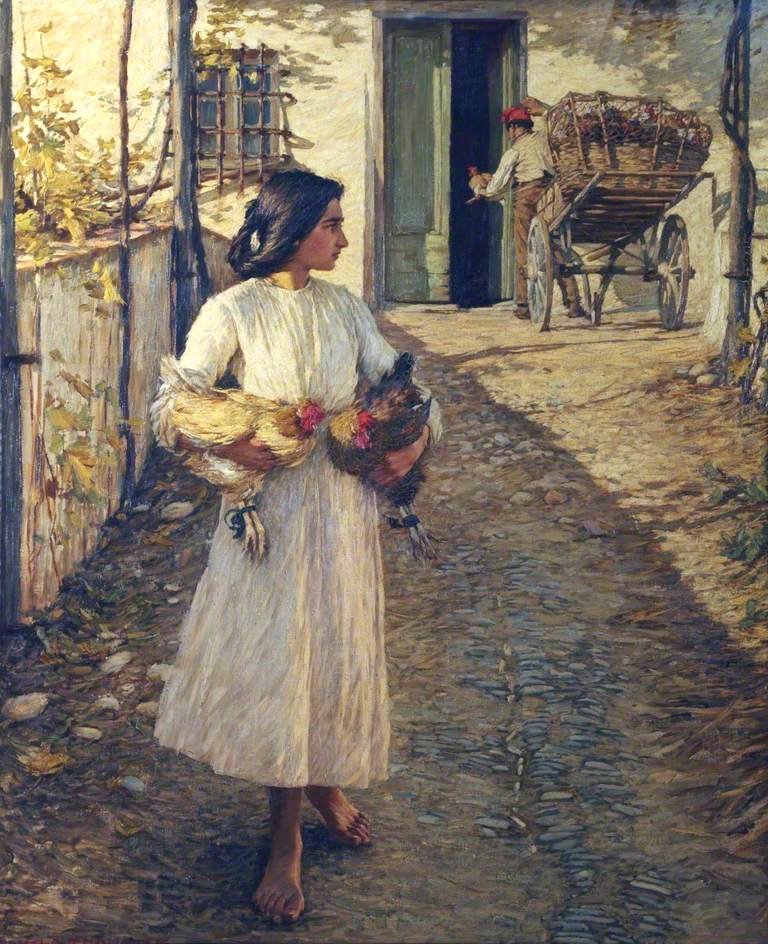
At the turn of the century La Thangue became more and more interested with the work of the French Impressionist painters and their fascination with light and in 1901 he travelled to Provence. From 1903 to 1911 he spent much of his time in the Italian region of Liguria building up a large collection of work. Despite La Thangue’s earlier outspoken criticism of the Royal Academy he became an Associate of the Royal Academy in 1898 and became a full Member in 1912.
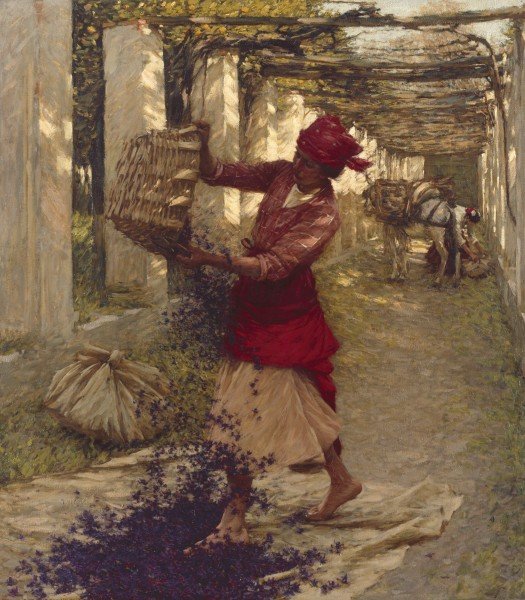
His diploma work for the Royal Academy was one entitled Violets for Perfume. The notable English artist, George Clausen (see My Daly Art Display May 30th & June 8th 2015) wrote about La Thangue’s work:
“…Sunlight was the thing that attracted him: this and some simple motive of rural occupation, enhanced by a picturesque surround…”
This work stemmed from his time in Provence and depicts a woman tipping a basket of freshly picked violets onto a muslin sheet in preparation for perfume making. All through his artistic career La Thangue developed his subject matter from labourers working in fields, vineyards and orchards. The depiction of the lady working in this work highlighted the back-to-basic work practice. Gone was the mechanised practice of harvesting which La Thangue disliked and which he saw creeping into the rural life of England, destroying the old-fashioned rural practices which he had so loved to paint.
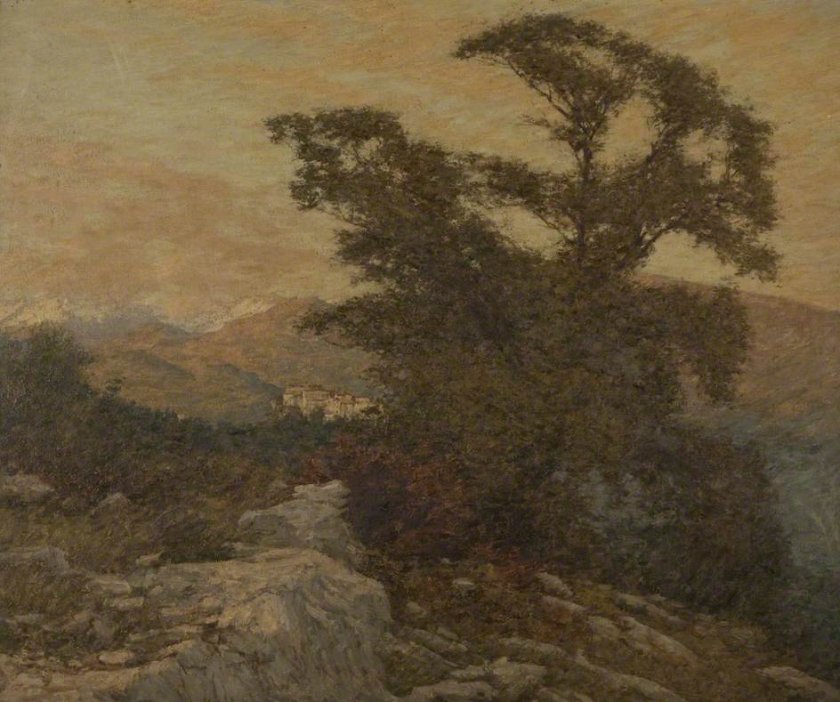
In 1914, just prior to the beginning of the Great War, the Leicester Galleries in London staged a one-man exhibition of La Thangue’s southern European landscape works, which concentrated on his paintings completed whilst he was in Provence and Liguria. One of the works exhibited was entitled A Mountain Frontier which La Thangue completed around 1910. The exhibition was a great success and praised by the critics. The artist William Sickert wrote about La Thangue’s skill as a painter in the May 1914 issue of the British literary magazine The New Age stating:
“…What renders La Thangue’s work particularly interesting is that while using the language of the day in painting, that is to say an opaque mosaic for recording objective sensations about visible nature, he is using it in a personal manner…”
Sickert went on to write that La Thangue, through his talent at developing relations of colour with a warm colour at the base, was able to build on it a series a series of beautiful and interesting sensations of nature which is what he, and not somebody else, had to say.
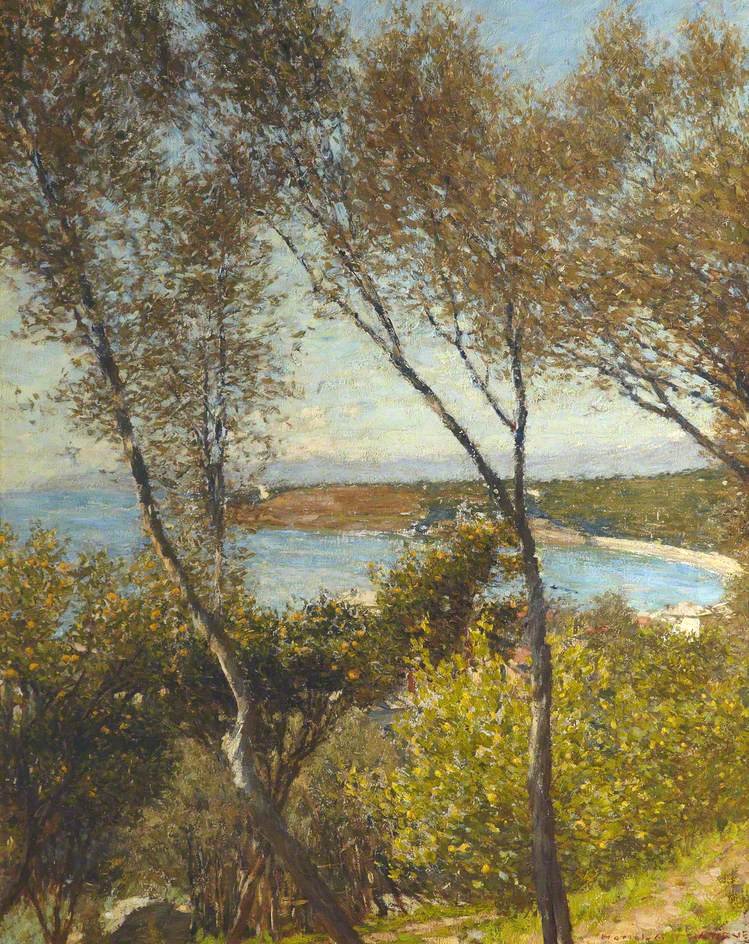
In the 1920’s after the Great War had ended La Thangue returned to Liguria and the motif of his paintings changed from the arable land of the English countryside to the sunlit orange groves and gardens of Italy. La Thangue spent those days in southern Europe painting en plein air directly on to large canvases. This belief is based on the fact that very few smaller versions of his paintings or sketches exist.
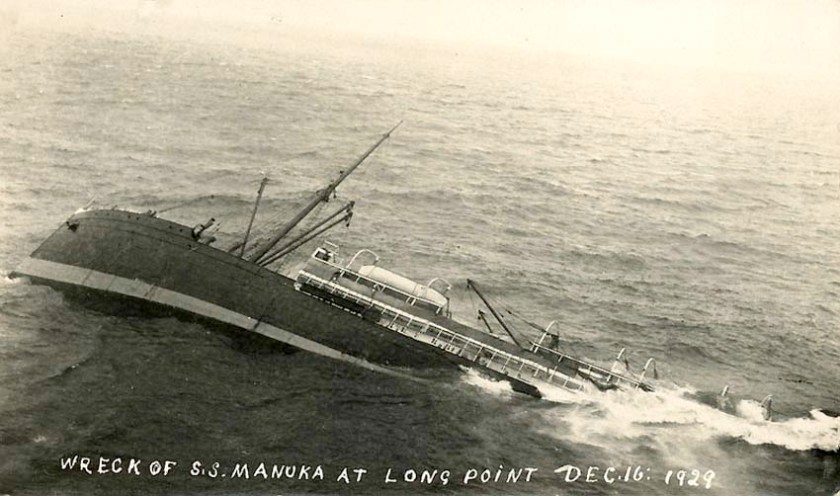
Henry Herbert La Thangue died on December 21st 1929, just a few weeks before his seventy-first birthday. Less than a week before his death La Thangue had been devastated and depressed when he was given the news that a vessel, the S.S. Manuka, during a voyage from Melbourne/Bluff/Dunedin was wrecked on Nugget Point near Long Point, South Otago. Part of the cargo on the vessel was two of La Thangue’s paintings. La Thangue was never to know, that five days after his death, the paintings were recovered and said to have been in “reasonable condition”.
His wife Kate died in 1941.

